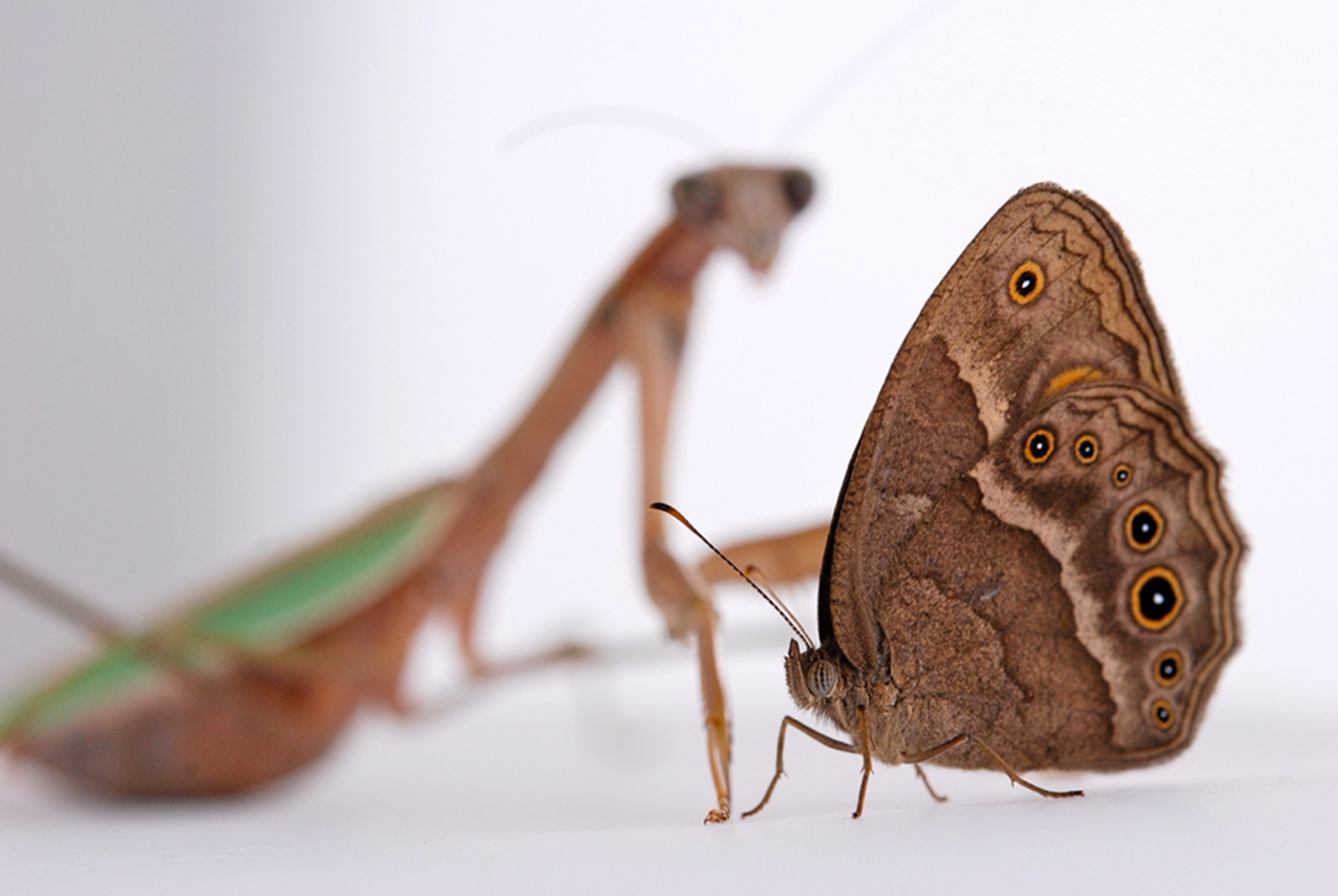Extra 'eyes' on wings land butterflies in a tight spot
Sign up now: Get ST's newsletters delivered to your inbox

Bush brown butterflies with more forewing eyespots were found to be more prone to predator attacks.
PHOTO: PIOTR NASKRECKI
Baey Zo-Er
Follow topic:
SINGAPORE - Some butterflies have patterns on their wings that look startlingly like eyes.
And where these distinctive spots are positioned on a butterfly's wings could mean the difference between life and death for the insect, a team of scientists from the National University of Singapore (NUS) has found.
Eyespots - the circular markings on the insect's wings - have been long thought to serve as an evolutionary defence against predators. They could look like the eyes of a larger animal, and potentially scare off the butterfly's natural predator.
The second theory is that eyespots attract the attention of predators - directing their attack to the wings and away from the insect's vital body parts like its head.
Studying the bush brown butterfly (Bicyclus anynana) - which is native to Malawi in Africa - the researchers found that variants with more eyespots on their larger forewings were attacked by predators more often.
The biologists had noticed that many butterflies from the Nymphalidae family - which is the broader group of butterflies that includes the bush brown butterfly - have about half as many eyespots on their forewings compared with their hindwings.
They hypothesised that the distribution of the eyespots would have an impact on the butterflies.
In experiments, they observed the behaviour of mantids - an insect that preys on butterflies - in attacking two variants of bush brown butterflies. One type had two forewing eyespots, while the other variant had four.
The researchers found that the butterflies with two additional eyespots were attacked more intensely at their forewings, in addition to the typical attacks on the hindwings.
Professor Antonia Monteiro from NUS' Department of Biological Sciences, who led the study, said: "When butterflies have a more even distribution of eyespots across forewings and hindwings, forewings get attacked more often, and butterflies will suffer greater mortality rates because their flight ability becomes compromised."
Butterflies can cope with damaged hindwings, but their forewings are critical for all stages of flight, from general flight to evasive manoeuvring.
Dr Ian Chan, a research fellow at the department who was part of the research team, said: "With more forewing damage, these butterflies are less likely to escape attacks, and even if they do, they would struggle to survive future attacks."
Since forewings are more important for flight, bush brown butterflies bear most of their eyespots on their hindwings, said Prof Monteiro.
The variants of this butterfly that have more forewing eyespots fall prey more often to predators, and lay fewer eggs due to their shorter lifespan. This has led to their declining population, the study said.

Next, the team hopes to extend the research to other butterfly and predator species, and uncover more factors that might influence eyespot distribution.
Dr Anuj Jain, a butterfly expert from the Nature Society (Singapore) who was not involved in the study, said he would like the study to be extended to local butterfly species.
He added that future research could also explore the relationship between wing patterns, predatory behaviour and urban habitats.
"For example, if some wing patterns linked to predation are less visible under certain light conditions, perhaps urban green spaces for butterflies can be designed to optimise those light conditions."

